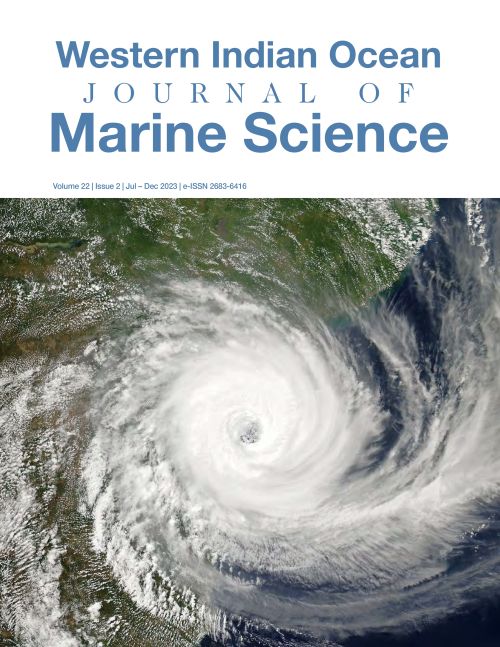Main Article Content
Salinity tolerance of Nile tilapia (Oreochromis niloticus) to seawater and growth responses to different feeds and culture systems
Abstract
The inability to acclimatise, feed and grow Nile tilapia (Oreochromis niloticus) in full seawater salinity has been a major obstacle to farming in marine waters. We investigated the salinity tolerance of O. niloticus and growth responses to different feeds and culture systems. Fish were first acclimatised to different salinities in laboratory aquaria, and the survival and growth performance in sea water were then assessed in aquaria, cages and ponds. Acclimatization to seawater salinity (5 – 30) took place at a rate of 5 every 9 days. Fish were stocked at densities of 5 fish/20 L in aquaria, 5 fish/m2 in cages and 3 fish/m2 in ponds. Replicates of 5, 3 and 3 were performed in aquaria, cages and ponds, respectively. Fish were fed on commercial (1 and 2) and locally formulated (30 % crude protein) diets. Mortality rates were higher in aquaria, when fish were introduced to salinities between 5 and 30 over 24 hours. Gradual salinity adjustments attained a stable survival rate of 78 % at salinities above 30. Aquarium experiments indicated significant negative correlation between salinity and survival (p < 0.001, r = 0.387) and daily growth rates varied with diet (0.01 – 0.05 g/day). Acclimatized fish showed minimal mortality in ponds and cages. Daily growth rates varied with diet and culture system; 0.54 - 2.48 g/day in cages and 1.1 - 2.5 g/day in ponds. Fish fed on commercial feed 2 showed significant growth rates for all culture methods (p < 0.05). O. niloticus could be fully acclimatised to seawater and attained promising growth rates when subjected to different commercial diets indicating potential of farming the species in marine waters.







